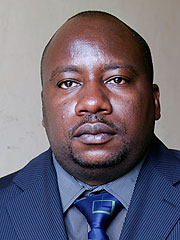Today is World Polio Day. The 24th of October has been chosen to commemorate the month in which Jonas Salk was born. Jonas Salk was the leader of the team that invented the first polio vaccine in 1955.


Today is World Polio Day. The 24th of October has been chosen to commemorate the month in which Jonas Salk was born. Jonas Salk was the leader of the team that invented the first polio vaccine in 1955.
Poliomyelitis often called polio or infantile paralysis, is an acute, viral, infectious disease spread from person to person, primary via the fecal-oral route. Although approximately 90% of polio infections cause no symptoms at all, affected individuals can exhibit a range of symptoms if the virus enters the blood stream.
In about 1% of cases, the virus enters the central nervous system, preferentially infecting and destroying motor neurons, leading to muscles weakness and acute flaccid paralysis. Different types of paralysis may occur, depending on the nerves involved.
Spinal polio is the most common form, characterised by asymmetric paralysis that most often involves the legs. Bulbar polio leads to weakness of muscles innervated by cranial nerves. Bulbospinal polio is a combination of bulbar and spinal paralysis.
Poliomyelitis was first recognised as a distinct condition by Jakob Heine in 1840.
Its causative agent, poliovirus, was identified in 1908 by Karl Landsteiner. Although major polio epidemics were unknown before the late 19th century, polio was one of the most dreaded childhood diseases of the 20th century. Polio epidemics have crippled thousands of people, mostly young children; the disease has caused paralysis and death for much of human history.
Polio had existed for thousands of years quietly as an endemic pathogen until the 1880s, when major epidemics began to occur in Europe; soon after, widespread epidemics appeared in the United States.
The polio vaccine has been hugely successful. For this year ( 2013) there were only 170 cases reported compared to 467 last year globally.
The vaccine is administered orally and only a few doses will protect children for life. Although the cost is rather low, it takes a tremendous effort and organisation in order to get it where it is most needed. Today, only three countries remain where the polio virus still makes victims, namely Afghanistan, Pakistan and Nigeria.
The challenge to administer vaccines to every child is huge and the environment is hostile.
The polio eradication effort strives to protect children from this crippling disease. The benefits are tenfold but on top of the list is the long term economic impact with healthcare savings estimated between 40-50 billion US$ in the next 20 years globally.
And yet, Rotary International’s slogan of their "End Polio Now” campaign states: "We are this close” indicating that we are not near the total eradication of the polio virus. More budget and effort will be needed to one day, free this world from polio, for everyone, forever.
In 1988, the Global Polio Eradication Initiative (GPEI) was established through a partnership between the World Health Organisation (WHO), Rotary International, CDC, the United Nations Children’s Fund (UNICEF) and governments.
By 2012, the annual incidence of polio had decreased globally by >99%, compared with 1988. However, because of the persistence of endemic WPV transmission and recurring outbreaks in polio-free countries after the original polio eradication target date of 2000, the World Health Assembly in 2012 declared the completion of polio eradication a programmatic emergency.
A key component of GPEI is the Stop Transmission of Polio (STOP) programme, which was developed and initiated by CDC with WHO in 1999 to mobilise additional human resources and technical assistance for countries affected by WPV transmission.
The World Health Organization has stated that they aim to eradicate polio by the year 2018. Since 1988, when the Global Polio Eradication Initiative (GPEI) was launched, immunisation efforts have significantly reduced the number of polio cases. However, in order to achieve full eradication of the disease, there needs to be a great deal more funding.
There are two vaccines available to fight polio - the inactivated poliovirus (IPV) and the oral polio vaccine (OPV).
The first polio vaccine was made in 1953.
These strategies include achieving and maintaining high vaccination coverage among children aged less than 1 year with at least three doses of oral poliovirus vaccine (OPV) through routine vaccination services; establishing effective epidemiologic and laboratory surveillance systems, with examination of stool specimens from suspected cases of polio; and providing supplemental vaccination through National Immunisation Days (NIDs) to interrupt wild poliovirus transmission.
In Rwanda, the last confirmed case of polio was in 1993 in Nyamasheke District. Note that Rwanda immunization coverage has reached 95% for all vaccines. The polio vaccine is at 97% coverage for all Rwandan children under one year.
The writer is the Head of the Vaccine Preventable Diseases Division in RBC


